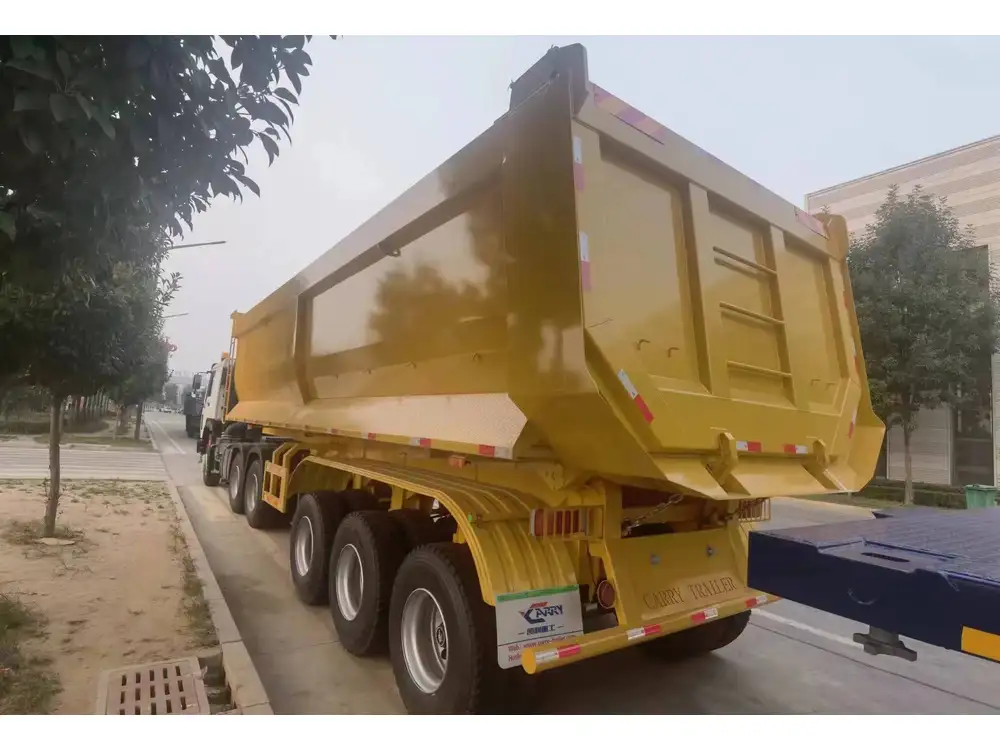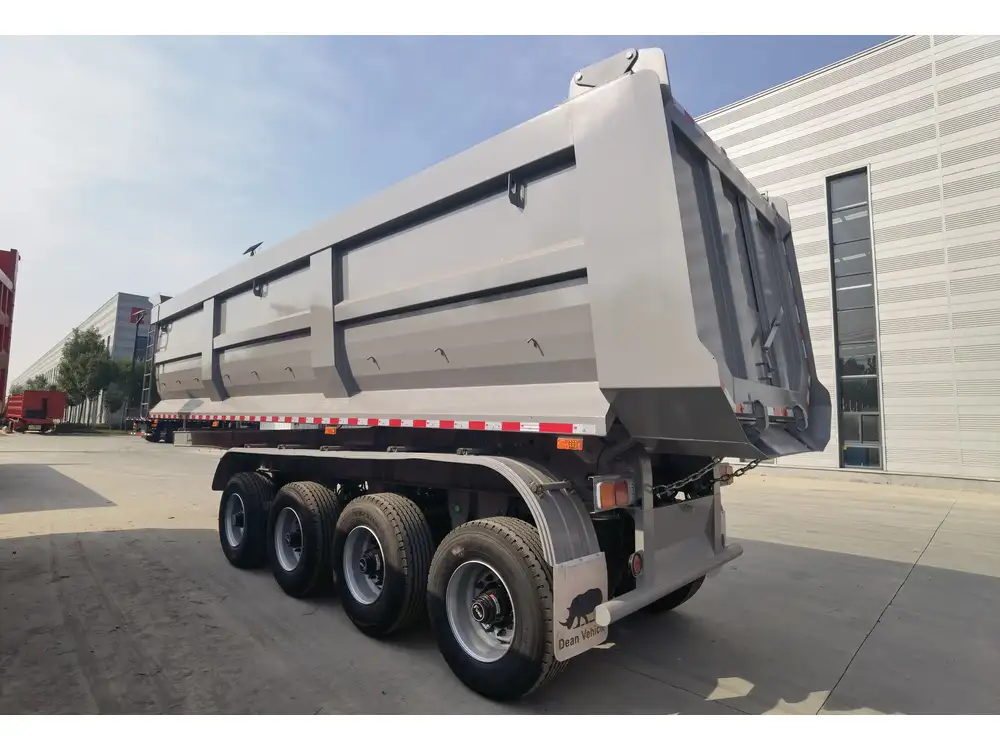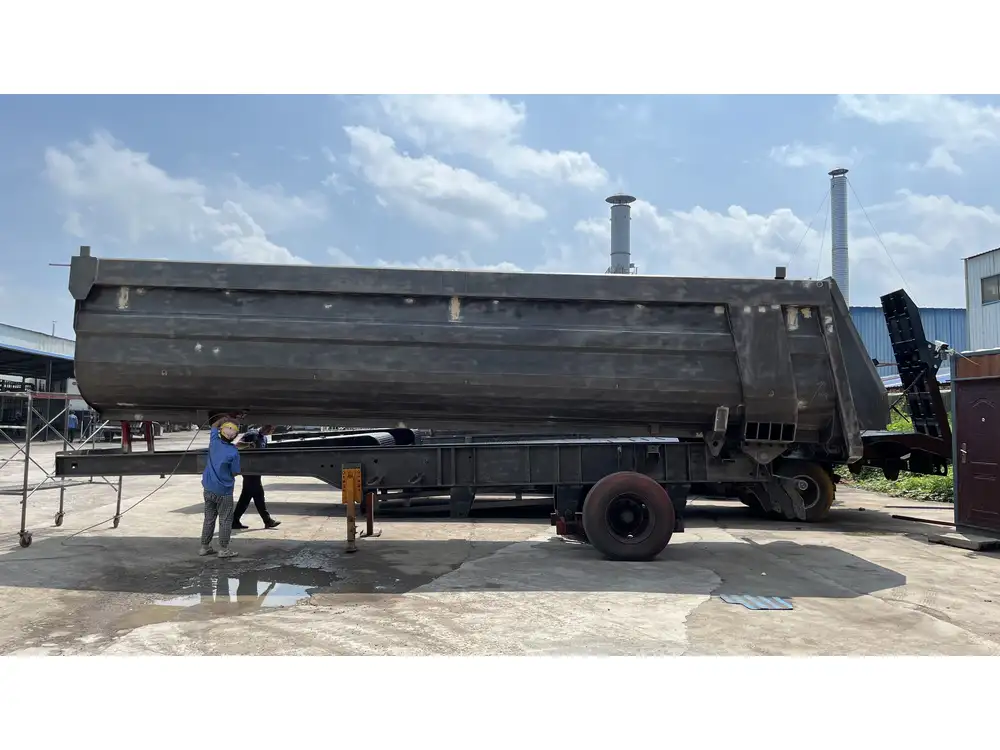In the transportation and logistics industry, the specifications of semi trailers hold significant importance. Among these specifications, the length of a semi trailer is crucial as it influences aspects such as cargo capacity, maneuverability, and compliance with regulations. This article delves deeply into the standard lengths of semi trailers, their implications, and essential considerations for manufacturers, logistics planners, and fleet operators.
Understanding Semi Trailers
What is a Semi Trailer?
A semi trailer is a type of trailer that, unlike traditional trailers, does not have a front axle. It is designed to be connected to a tractor unit (the truck) which carries the majority of its weight. The back of the semi trailer is secured to the hitch of the tractor while the front rests on the truck itself. This design allows for easier loading and unloading, making semi trailers a preferred choice for transporting goods across various distances.

Types of Semi Trailers
Before discussing standard lengths, it is essential to note that semi trailers come in various types, designed for specific transportation needs:
| Type of Semi Trailer | Description |
|---|---|
| Flatbed Trailers | Used for transporting heavy loads, allowing easy loading from any side. |
| Reefer Trailers | Insulated trailers for transporting temperature-sensitive goods like food. |
| Dry Van Trailers | Enclosed trailers designed for shipping dry goods, providing protection from elements. |
| Tanker Trailers | Specialized trailers for transporting liquids, gases, and hazardous materials. |
| Dump Trailers | Designed for unloading materials like gravel or sand, featuring a hydraulic lift. |
Standard Lengths of Semi Trailers
Overview of Length Regulations
The standard length of a semi trailer is not a one-size-fits-all measurement; it varies based on several factors, such as the type of trailer, its intended use, and regulatory standards in different regions. National and local regulations govern the maximum allowable lengths for semi trailers, designed to balance utility with safety, infrastructure compatibility, and environmental considerations.

United States Regulations
In the United States, the Federal Highway Administration (FHWA) primarily regulates the maximum lengths of semi trailers. The general rule of thumb is:
- Maximum Length: Typically 53 feet for standard semi trailers, especially dry vans and reefers.
- Intermodal Standards: In some cases, containers transferred via rail can have a length of up to 56 feet to accommodate cargo.
- Special Permits: States may issue special permits for longer trailers, particularly for wide-load transport or oversized cargo.
State Regulations
It’s crucial to recognize that while federal regulations provide a baseline, individual states may impose stricter limits. For instance:
- Some states allow longer trailers under specific conditions.
- Local jurisdictions may have additional restrictions impacting length, especially in urban areas.
Table of Common Semi Trailer Lengths
Here’s a detailed comparison of various semi trailer types and their typical lengths:
| Semi Trailer Type | Standard Length Range | Purpose |
|---|---|---|
| Standard Dry Van | 48 to 53 feet | Transporting general cargo |
| Reefer Trailer | 48 to 53 feet | Shipping perishable goods |
| Flatbed Trailer | 48 to 53 feet | Transporting bulky items and building materials |
| Tanker Trailer | 40 to 53 feet | Moving liquids; specialized for safety |
| Extendable Flatbed | 48 feet, extendable up to 80 feet | For oversized loads |

Considerations for Manufacturers and Fleet Operators
Factor in Cargo Types
When choosing a semi trailer, it is vital to consider the type of cargo being transported. Different cargo types might necessitate different trailer lengths. For example, bulk materials might require flatbeds to accommodate variable lengths, while critical temperature-sensitive goods necessitate reefers fixed at typical lengths.
Maneuverability
Longer semi trailers can present challenges, especially in urban environments. Drivers must be trained to navigate their vehicles effectively, keeping turning radius and overall handling in mind. The increased length can lead to difficulty in routing through tight areas, parking, and unloading zones.

Weight Distribution
The length of a semi trailer also affects weight distribution. Ensure that the load is evenly distributed to prevent excessive wear on tires, improve fuel efficiency, and meet safety regulations. Overloading a specific section may lead to accidents, especially with longer trailers that might compound these issues.
Benefits of Choosing the Right Length
Enhanced Fuel Efficiency
Understanding the dynamics of trailer length can significantly influence fuel efficiency. Longer trailers can often carry more goods, maximizing payload capacity. This can reduce the number of trips necessary, which not only saves on fuel costs but enhances operational efficiency.

Compliance with Regulations
Selecting a trailer length that adheres to state and federal regulations is critical. Operating outside of these boundaries can result in hefty fines and may cause delays in logistics chains, leading to unexpected costs.
Increased Cargo Capacity
Longer trailers, when used correctly and legally, can significantly increase cargo capacity, allowing businesses to expand their shipping needs without a proportional increase in fleet size or costs.
Frequently Asked Questions (FAQs)

What is the maximum legal length of a semi trailer in the US?
As stated earlier, the maximum legal length typically is 53 feet for most semi trailers. However, particular loads and routes may allow longer trailers with appropriate permits.
Are there exceptions for oversized loads?
Yes, specific permits can be obtained for oversized loads, allowing longer trailers to be utilized legally. These permits require adherence to strict guidelines concerning route planning and load management.
Can I use a longer trailer for standard shipping?
Utilizing a longer trailer for standard shipping can offer benefits in terms of capacity; however, compliance with local regulations is paramount. Always refer to the governing regulations for the specific areas your fleet will operate in.

How do I know if my cargo fits a specific trailer?
It’s essential to measure and calculate your cargo dimensions, weight, and load distribution before selecting a trailer. Consult with your trailer provider or logistics expert to ensure the right fit.
What is the importance of proper trailer length for safety?
Proper trailer length is directly related to safety. Longer trailers can lead to increased blind spots and difficulty in maneuvering, increasing the risk of accidents. Proper training and adherence to regulations are necessary to mitigate these risks.
Conclusion: Making the Right Choice
The standard length of a semi trailer is just one aspect of a multifaceted transportation equation that requires careful consideration. By understanding various types of semi trailers, regulatory compliance, and the implications of size on maneuverability and capacity, manufacturers and fleet operators can make informed decisions that enhance operational efficiency while adhering to safety and legal standards.
Ultimately, whether you’re looking to expand your fleet or refine your logistics processes, we emphasize the importance of selecting a trailer length that aligns with your operational needs, adheres to regulations, and optimizes your cargo transportation strategies. In this fast-paced industry, where efficiency and compliance go hand in hand, having the right information can lead to substantial benefits and continued success.



